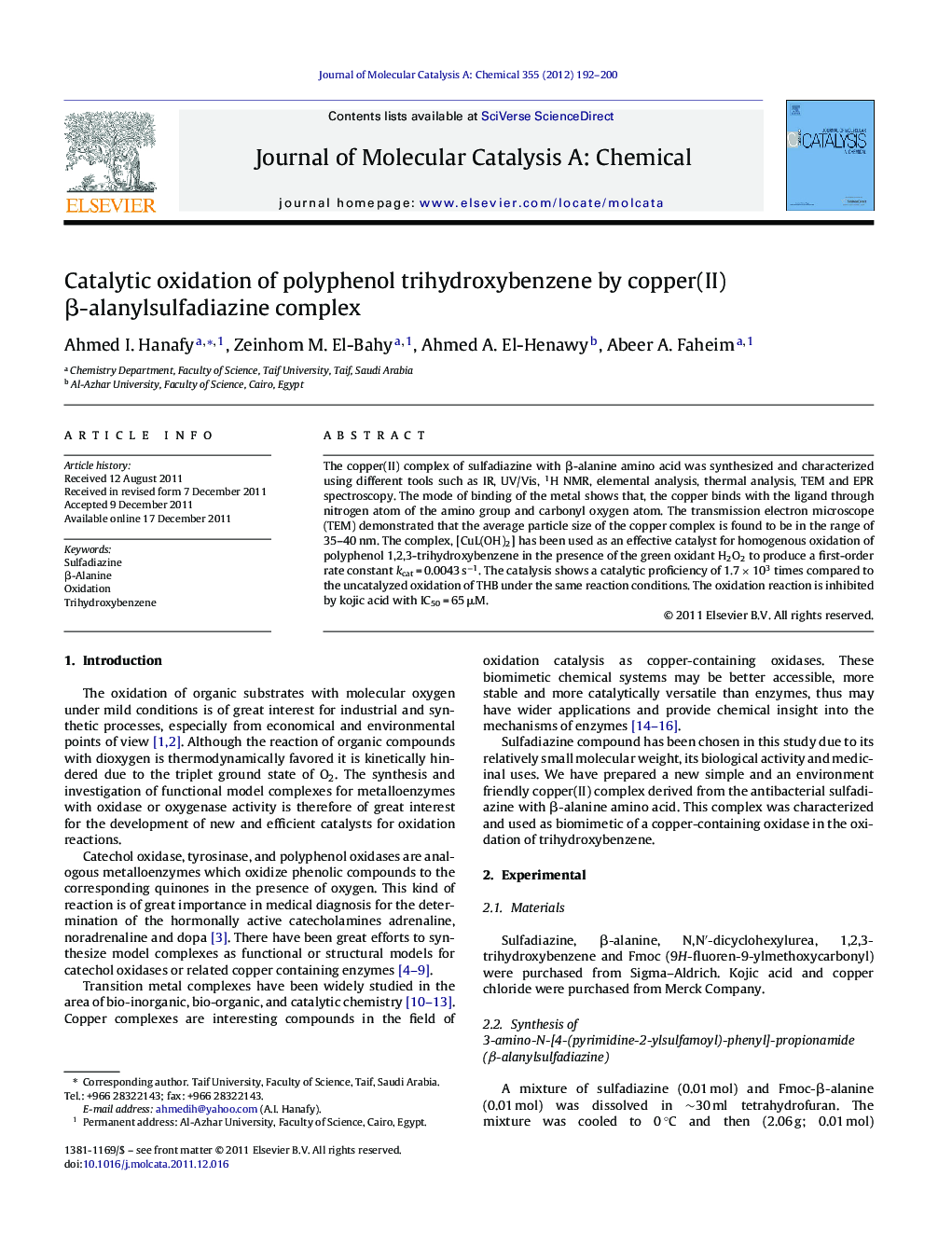| Article ID | Journal | Published Year | Pages | File Type |
|---|---|---|---|---|
| 66188 | Journal of Molecular Catalysis A: Chemical | 2012 | 9 Pages |
The copper(II) complex of sulfadiazine with β-alanine amino acid was synthesized and characterized using different tools such as IR, UV/Vis, 1H NMR, elemental analysis, thermal analysis, TEM and EPR spectroscopy. The mode of binding of the metal shows that, the copper binds with the ligand through nitrogen atom of the amino group and carbonyl oxygen atom. The transmission electron microscope (TEM) demonstrated that the average particle size of the copper complex is found to be in the range of 35–40 nm. The complex, [CuL(OH)2] has been used as an effective catalyst for homogenous oxidation of polyphenol 1,2,3-trihydroxybenzene in the presence of the green oxidant H2O2 to produce a first-order rate constant kcat = 0.0043 s−1. The catalysis shows a catalytic proficiency of 1.7 × 103 times compared to the uncatalyzed oxidation of THB under the same reaction conditions. The oxidation reaction is inhibited by kojic acid with IC50 = 65 μM.
Graphical abstractFigure optionsDownload full-size imageDownload high-quality image (165 K)Download as PowerPoint slideHighlights► The ligand has been prepared by reacting sulfadiazine with β-alanine amino acid. ► Cu(II) complex of the prepared ligand has been prepared and fully characterized. ► This complex was used as a catalyst for homogenous oxidation of trihydroxybenzene. ► The mechanism of the oxidation was kinetically studied. ► The oxidation has been inhibited by kojic acid.
